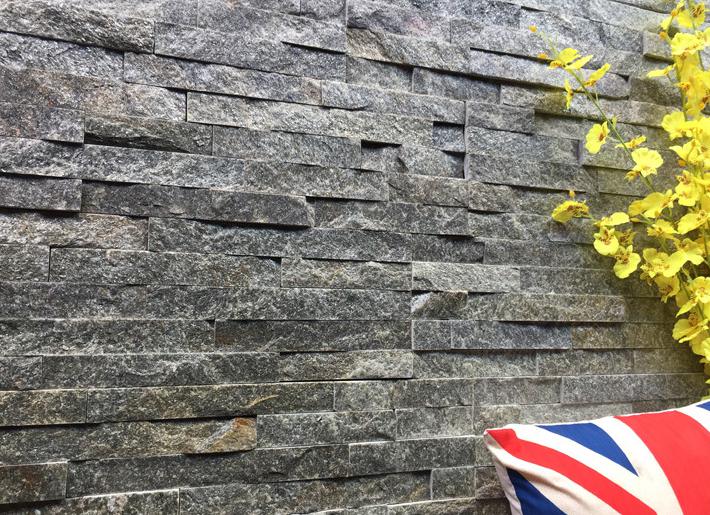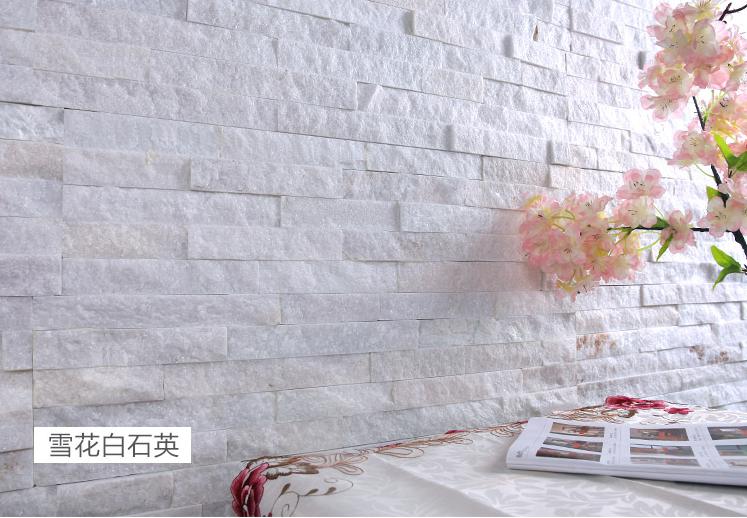Ti sei preoccupato per la tua pietra accatastata all'aperto che perde il suo fascino, o peggio, sgretolando dopo un duro inverno? Il danno all'acqua è un “vero affare,” Causare erosione e problemi strutturali che possono trasformare le tue bellissime caratteristiche di pietra in costose riparazioni.
Ecco perché i pannelli in pietra impilati impermeabili sono essenziali per qualsiasi installazione esterna. Questa guida ti guiderà selezionando i sigillanti giusti, padroneggiare le tecniche di applicazione e mantenere la pietra per assicurarsi che valga la prova del tempo. Proteggere il tuo investimento non è mai stato più facile.
A Top Source Stone, comprendiamo l'importanza della qualità e della longevità. Con oltre 15 anni di esperienza, garantiamo il nostro pannelli di pietra impilati Offrire precisione dimensionale e integrità dei materiali, distinguendoci sul mercato. Ci immergiamo su come mantenere le tue installazioni di pietra per esterni fantastiche per gli anni a venire.
Segreti a pannelli in pietra impilati impermeabili & Risparmia
Impermeabilizzazione del tuo pannelli di pietra impilati è molto importante, soprattutto se vuoi che abbiano un bell'aspetto per anni. Trascurare l'ammontare può portare a tutta una serie di problemi, come l'erosione, le crepe e persino la muffa. Chi lo vuole? Facendo i passi corretti all'inizio, puoi proteggere il tuo investimento e mantenere la pietra che sembra cavalcare o muore per decenni.
Perché l'impermeabilizzazione è essenziale per la pietra impilata all'aperto
All'aperto pietra accatastata è costantemente esposto agli elementi. La pioggia, la neve e i raggi UV possono provocare il caos sulla pietra, causando il deterioramento nel tempo. L'impermeabilizzazione si comporta come uno scudo, impedendo all'acqua di filtrare nella pietra e causare danni. Ciò è particolarmente importante nei climi con inverni duri o forti piogge.
Senza impermeabilizzazione adeguata, potresti ritrovarti a gestire costose riparazioni lungo la strada. Pensalo come una misura preventiva che ti consente di risparmiare denaro e mal di testa a lungo termine. Inoltre, mantiene la tua pietra accatastata il suo meglio, mantenendo la sua bellezza naturale e il suo fascino.
Tipi comuni di danni da acqua: erosione, cracking e muffa
Il danno idrico può manifestarsi in diversi modi. L'erosione si verifica quando l'acqua svanisce lentamente la superficie della pietra, facendola perdere la consistenza e il colore. Il crack si verifica quando l'acqua si congela all'interno della pietra, si espande e provoca fratture. Mold e muffa prosperano in ambienti umidi, portando a macchie sgradevoli e potenziali pericoli per la salute.
Questi tipi di danni non solo sminuiranno l'aspetto del tuo pietra accatastata ma può anche compromettere la sua integrità strutturale. Affrontare questi problemi può essere costoso e richiedere molto tempo. L'adeguata impermeabilizzazione riduce al minimo questi rischi e mantiene la pietra in ottime condizioni.
Risparmio dei costi a lungo termine: prevenzione di costose riparazioni
Investire nell'impermeabilizzazione del pannello di pietra è una decisione finanziaria intelligente. Anche se può sembrare una spesa aggiuntiva in anticipo, può farti risparmiare una quantità significativa di denaro a lungo termine. Le riparazioni a una pietra erosa, rotta o ammuffita possono essere costose, spesso richiedono servizi professionali e materiali di sostituzione. L'impermeabilizzazione aiuta a evitare queste spese impedendo che il danno si verifichi in primo luogo.
Pensalo come un'assicurazione per il tuo pietra accatastata. Un po 'di sforzo e investimenti ora possono proteggere il tuo investimento per gli anni a venire. Inoltre, mantenendo l'aspetto e l'integrità della tua pietra, stai anche preservando il valore della tua proprietà. La pietra della sorgente superiore offre pannelli di pietra durevoli e di alta qualità che, se correttamente impermeabili, offrono risparmi sui costi a lungo termine.
Fattori ambientali che influenzano la durata della pietra
Diversi fattori ambientali possono influire sulla durata di pietra accatastata. I raggi UV dal sole possono sbiadire il colore della pietra e indebolire la sua struttura. Le fluttuazioni della temperatura possono causare l'espansione della pietra e contrarre, portando a crepe. L'inquinamento atmosferico e la pioggia acida possono anche contribuire all'erosione e allo scolorimento.
Comprendere questi fattori ambientali è cruciale per la scelta dei giusti prodotti e tecniche di impermeabilizzazione. Diversi tipi di pietra possono richiedere diversi livelli di protezione. Tenendo conto di questi fattori, puoi garantire che i tuoi sforzi di impermeabilizzazione siano efficaci e duraturi. La manutenzione regolare delle pietre per esterni è importante per conservare la bellezza e la vita dei pannelli.
Confronto per le prestazioni di pannelli in pietra impilati impermeabili
| Metodo di impermeabilizzazione | Costo (per mq ft) | Frequenza dell'applicazione | Durata | Efficacia | Impatto ambientale |
|---|---|---|---|---|---|
| Sigillanti penetranti | $ 1,50 – $ 3,00 | Ogni 3-5 anni | 3-5 anni | Alto | Basso |
| Sigillatori di superficie | $ 1,00 – $ 2,50 | Ogni 1-2 anni | 1-2 anni | Medio | Basso |
| Rivestimenti elastomerici | $ 3,00 – $ 5,00 | Ogni 5-10 anni | 5-10 anni | Molto alto | Moderare |
| Sigillanti a base di silicone | $ 2,00 – $ 4,00 | Ogni 2-4 anni | 2-4 anni | Alto | Basso |
| Impermeabilizzazione fai -da -te | $ 0,50 – $ 1,50 | Varia | Varia | Da basso a medio | Varia |
Guida di impermeabilizzazione fai -da -te: proteggi la pietra impilata come un professionista
Voglio proteggere il tuo pannelli di pietra impilati te stesso? È totalmente fattibile! Questa guida si rompe come impermeabile pannelli di pietra impilati, così puoi proteggere il tuo investimento e mantenere quelle pietre fantastiche per gli anni a venire. Copriremo di tutto, dalla preparazione della superficie alla raccolta del sigillante giusto e ottenga quella copertura uniforme. Iniziamo!
“I pannelli in pietra imbottiti impermeabili possono farti risparmiare denaro e darti la soddisfazione di un lavoro ben fatto.”
Preparazione della superficie: pulizia e ispezione dei pannelli di pietra
Per prima cosa, devi pulire quei pannelli di pietra! Usa un pennello e un po 'di sapone e acqua delicata per rimuovere lo sporco, la polvere o lo sporco. Risciacquare accuratamente e lasciare asciugare completamente la pietra. Questo potrebbe richiedere un giorno o due, a seconda del tempo, quindi sii paziente. Ispezionare i pannelli per eventuali crepe o danni. Affrontare questi problemi prima che il sigillo ti darà un risultato finale migliore.
Una superficie pulita garantisce che il sigillante aderisce correttamente. Se ci sono sporcizia o detriti, il sigillante non si lega correttamente e non otterrai la protezione di cui hai bisogno. Inoltre, una superficie pulita ti consente di individuare eventuali problemi prima che peggiorano. Pensa a dare al tuo sigillante la migliore possibilità di fare il suo lavoro.
Scegliere il sigillante giusto: tipi, marchi e applicazioni
Ora per il sigillante! Esistono alcuni tipi diversi tra cui scegliere, come sigillanti penetranti e sigillanti di superficie. I sigillanti penetranti si immergono nella pietra e forniscono protezione dall'interno, mentre i sigillanti di superficie creano uno strato protettivo sulla parte superiore. Per il sigillante in pietra esterna, i sigillanti penetranti sono generalmente una scelta migliore, poiché non cambiano l'aspetto della pietra e durano più a lungo. Cerca marchi come Aqua mix O Stonetech, noto per la loro qualità e durata. Controlla sempre le istruzioni del produttore prima di applicare.
Considera il tipo di pietra che hai quando scegli un sigillante. Alcuni sigillanti sono più adatti per alcuni tipi di pietra rispetto ad altri. La pietra della sorgente superiore consiglia i sigillanti appositamente progettati per la pietra naturale per evitare scolorimento o danno. L'uso del sigillante sbagliato può effettivamente fare più danni che benefici, quindi fai le tue ricerche e scegli saggiamente.
Applicazione del sigillante: tecniche per una copertura pari
È ora di applicare il sigillante! Usa un pennello, un rullo o uno spruzzatore per applicare un rivestimento sottile e uniforme ai pannelli di pietra. Lavora in piccole sezioni e assicurati di entrare in tutti gli angoli e le fessure. Evita di applicare troppo sigillante, poiché ciò può causare una finitura nuvolosa o irregolare. Seguire le istruzioni del produttore per il tempo di asciugatura e la nuova applicazione. Di solito, due mani sono meglio di uno!
Anche la copertura è la chiave per un'efficace impermeabilizzazione. Se ti perdono i punti, l'acqua può ancora penetrare e causare danni. Presta molta attenzione ai bordi e agli angoli, poiché queste sono spesso le aree più vulnerabili. Prenditi il tuo tempo e non affrettare il processo. Sigillatura pietra accatastata Per all'aperto il modo giusto significa proteggerlo completamente.
Diffusione di lacune e giunti: utilizzo del mastice flessibile
Non dimenticare le lacune e le articolazioni tra i pannelli di pietra! Questi sono punti di accesso privilegiati per l'acqua. Utilizzare un mastice flessibile appositamente progettato per l'uso esterno per sigillare queste aree. Applicare il mastice senza intoppi e rimuovere qualsiasi eccesso con un panno umido. Ciò creerà una barriera a tenuta stagna e impedirà all'acqua di filtrare dietro i pannelli.
Calafataggio è un passo essenziale per impermeabilizzare pietra accatastata. Fornisce un ulteriore strato di protezione e aiuta a impedire all'acqua di mettersi dietro i pannelli. Scegli un mastice che corrisponda al colore della tua pietra per un aspetto senza soluzione di continuità. Con questi passaggi, avrai impermeabile pannelli di pietra impilati Sarà bello per anni. Sempre impermeabile pannelli di pietra impilati Per garantire la longevità!
| Fare un passo | Descrizione | Strumenti/materiali | Tempo stimato | Costo |
|---|---|---|---|---|
| Pulizia | Rimuovi sporco e detriti | Spazzola, sapone, acqua | 1-2 ore | $ 10 |
| Ispezione | Verificare la presenza di crepe/danni | Occhi | 30 minuti | $ 0 |
| Applicazione del sigillante | Applicare un cappotto uniforme di sigillante | Pennello/rullo/spruzzatore, sigillante | 2-4 ore | $ 50- $ 100 |
| Calacciatura | Sigilla lacune e giunti | Cannaio, Calacco | 1-2 ore | $ 20- $ 40 |
| Tempo di asciugatura | Lasciare asciugare il sigillante | Tempo | 24-48 ore | $ 0 |
Mantieni la tua pietra incontaminata: punte di manutenzione per pannelli impermeabili
Quindi, hai impermeabilizzato il tuo pannelli di pietra impilati - Eccezionale! Ma il lavoro non è del tutto fatto. Mantenendo il tuo tempo resistente impiallaccia di pietra è fondamentale per farla apparire al meglio e garantire che dura per gli anni a venire. La manutenzione regolare ti aiuterà a catturare potenziali problemi in anticipo e prevenire costose riparazioni lungo la strada. Ecco come mantenere il tuo impermeabile pannelli di pietra impilati.
Ispezione e manutenzione regolari sono fondamentali per estendere la durata della tua impermeabile pannelli in pietra impilati.”
Suggerimenti di ispezione regolare: identificare presto potenziali problemi
Prendere l'abitudine di ispezionare il tuo pietra accatastata regolarmente, idealmente ogni pochi mesi. Cerca eventuali segni di crack, scheggiature o scolorimento. Presta molta attenzione alle aree esposte alla luce solare diretta o alle forti piogge. Inoltre, controlla il sigillante attorno alle articolazioni e ai bordi per assicurarti che sia ancora intatto. Il rilevamento precoce è la chiave per impedire ai problemi minori di diventare importanti mal di testa.
Tieni d'occhio qualsiasi efflorescenza, che è una sostanza bianca e polverosa che può apparire sulla superficie della pietra. Ciò è causato da sali minerali attratti dalla superficie dall'umidità. Mentre di solito è innocuo, può essere sgradevole e può indicare un problema con l'impermeabilizzazione. In caso di problemi, affrontali prontamente per prevenire ulteriori danni.
Programma di riapplicazione: quando e come riprendere
L'impermeabilizzazione non è un affare unico. Nel tempo, il sigillante si logorà e dovrà essere riapplicato. Il programma di riapplicazione dipende dal tipo di sigillante che hai usato e dal clima in cui vivi. Come regola generale, dovresti ricorrere il tuo pietra accatastata Ogni 3-5 anni. Tuttavia, se si nota qualche segnale di danno idrico, è meglio riprendersi prima piuttosto che dopo.
Prima di riapplicare il sigillante, pulire accuratamente la pietra e lasciarla asciugare completamente. Seguire gli stessi passaggi utilizzati per l'applicazione iniziale, assicurandoti di applicare un cappotto sottile, uniforme. È anche una buona idea testare prima il sigillante in un'area poco appariscente per assicurarsi che non scoraggi la pietra. Mantenimento impermeabile pannelli di pietra impilati A forma di punta non è mai stato più facile!
Tecniche di pulizia: metodi sicuri per mantenere l'aspetto in pietra
Quando pulisci il tuo pietra accatastata, Evita di usare sostanze chimiche aggressive o detergenti abrasivi. Questi possono danneggiare la pietra e spogliare il sigillante. Invece, usa una soluzione di acqua e acqua di sapone e una spugna morbida. Risciacquare accuratamente e lasciare asciugare completamente la pietra. Per macchie più difficili, puoi provare a usare un detergente per pietre specializzato.
Il lavaggio della pressione può anche essere un modo efficace per Pietra impilata pulita, ma fai attenzione a non usare troppa pressione. Inizia con un'impostazione bassa e aumenta gradualmente la pressione fino a trovare un livello che rimuove efficacemente lo sporco e lo sporco senza danneggiare la pietra. Testa sempre prima in un'area poco appariscente. Una corretta manutenzione della pietra esterna fa molta strada.
Riparazione di danni minori: affrontare crepe e chip
Anche con un'adeguata impermeabilizzazione e manutenzione, possono ancora verificarsi danni minori. Piccole crepe e patatine possono di solito essere riparati con un kit di riparazione in pietra. Questi kit in genere includono un epossidico abbinato a colori o un riempimento acrilico che può essere utilizzato per riempire il danno. Segui attentamente le istruzioni del produttore e assicurati di fondere il riempimento senza soluzione di continuità con la pietra circostante.
Per crepe più grandi o danni più significativi, è meglio consultare un muratore di pietra professionale. Possono valutare il danno e raccomandare il miglior modo di agire. Affrontare tempestivamente danni minori impedirà di peggiorare e aiutare a Mantieni il fascino estetico della tua pietra accatastata. Seguendo questi suggerimenti, puoi goderti la tua bella pietra accatastata per gli anni a venire. La pietra della Top Source è orgogliosa di una pietra di qualità che, se correttamente mantenuta, dura una vita.
| Attività di manutenzione | Frequenza | Strumenti/materiali | Tempo stimato | Costo |
|---|---|---|---|---|
| Ispezione | Ogni 3-6 mesi | Occhi | 30 minuti | $ 0 |
| Pulizia | Se necessario | Sapone delicato, acqua, pennello morbido | 1-2 ore | $ 5 |
| Ricorrere | Ogni 3-5 anni | Sigillante, pennello/rullo/spruzzatore | 2-4 ore | $ 50- $ 100 |
| Riparazioni minori | Se necessario | Kit di riparazione in pietra | 1-2 ore | $ 20- $ 40 |

Conclusione
Dai miei anni a Top Source Stone, ho imparato che l'impermeabilizzazione non è solo un passo: è un investimento. Vedendo come l'acqua può danneggiare bellissime installazioni in pietra, so che è proteggere i tuoi pannelli in pietra accatastati “denaro ben speso.”
Con il sigillante giusto e un po 'di grasso del gomito, puoi prolungare la vita della tua pietra, mantenendola incontaminata per anni. Si tratta di prevenire i problemi prima che inizino, risparmiando tempo e denaro a lungo termine.
Fidati di me, fare questi passi ti darà tranquillità e manterrà la bellezza dei tuoi spazi all'aperto. Se stai cercando di assicurarti che la tua pietra sia la prova del tempo, un po 'di manutenzione fa molta strada.
FAQ
D1: Riesci a sfogliare i muri di pietra impilati esterni resistenti alle intemperie?
A1: Sì, i muri in pietra impilati esterni possono essere resoconti alle intemperie iniziando con un substrato pulito, applicando una membrana impermeabilizzazione di alta qualità e utilizzando mortaio esterno. Dopo l'installazione, si consiglia di sigillare con un sigillante traspirante.
Q2: Qual è il modo migliore per applicare membrane impermeabilizzanti alla pietra impilata?
A2: Il modo migliore per applicare membrane impermeabilizzanti alla pietra impilata è garantire un'adeguata preparazione del substrato. Installa una membrana impermeabilizzante che gestirà la penetrazione dell'acqua attraverso gli spazi tra le pietre.
D3: Come si mantengono i pannelli di pietra impilati all'aperto?
A3: A Mantenere i pannelli in pietra impilati all'aperto, ispezionarli regolarmente per crepe o pietre sciolte, soprattutto dopo eventi meteorologici estremi, e affronta prontamente eventuali problemi che trovi.
Q4: i pannelli di rivestimenti in pietra impilati finti sono impermeabili?
A4: SÌ, Faux Pietra impilata Pannelli di rivestimenti come quelli offerti da Genstone sono progettati per essere impermeabili al 100% e testati per gli estremi meteorologici, rendendoli adatti a varie condizioni ambientali.
Q5: Perché una membrana impermeabilizzante è cruciale per le installazioni in pietra impilata?
A5: Una membrana impermeabile è cruciale per Installazione in pietra impilata Perché impedisce all'acqua di penetrare dietro le pietre, il che potrebbe causare danni nel tempo.
D6: Quali materiali sono i migliori per la pietra immergeta impermeabili utilizzata nelle docce?
A6: Per la pietra imbottita impermeabile in docce, è essenziale utilizzare un substrato completamente impermeabilizzato, con materiali come un metodo del letto di thinset adatto per aderire alla pietra.
D7: I pannelli murali in pietra impilati possono essere utilizzati in aree umide come i bagni?
A7: Sì, i pannelli murali in pietra impilati, in particolare i pannelli finti, possono essere utilizzati in aree umide come i bagni poiché sono progettati per essere resistenti e resistenti all'acqua.
D8: Quali sono le caratteristiche comuni dei pannelli in faux in falda impermeabili?
A8: Le caratteristiche comuni di pannelli in fauci impermeabili includono essere realizzati con materiali di alta qualità come il poliuretano, durevoli e resistenti sia ai danni UV che all'acqua.
Collegamenti esterni
- Puoi muri di pietra impilati esterni resistenti alle intemperie?
- Membrane impermeabilizzanti per pietra impilata
- Installazione di pietra impilata sotto una doccia
- 42 in. X 12 pollici.
- Pareti doccia in pietra naturale | Pannelli impiallacciati in pietra impilati per le pareti della doccia
- Pannelli di pietra impilati fai -da -te: installa come un professionista in 5 passi
- Faux Stone, mattone & Pannelli da bagno impermeabili in legno
- Pareti doccia in pietra impilata – Doccia personalizzata | Genstone


